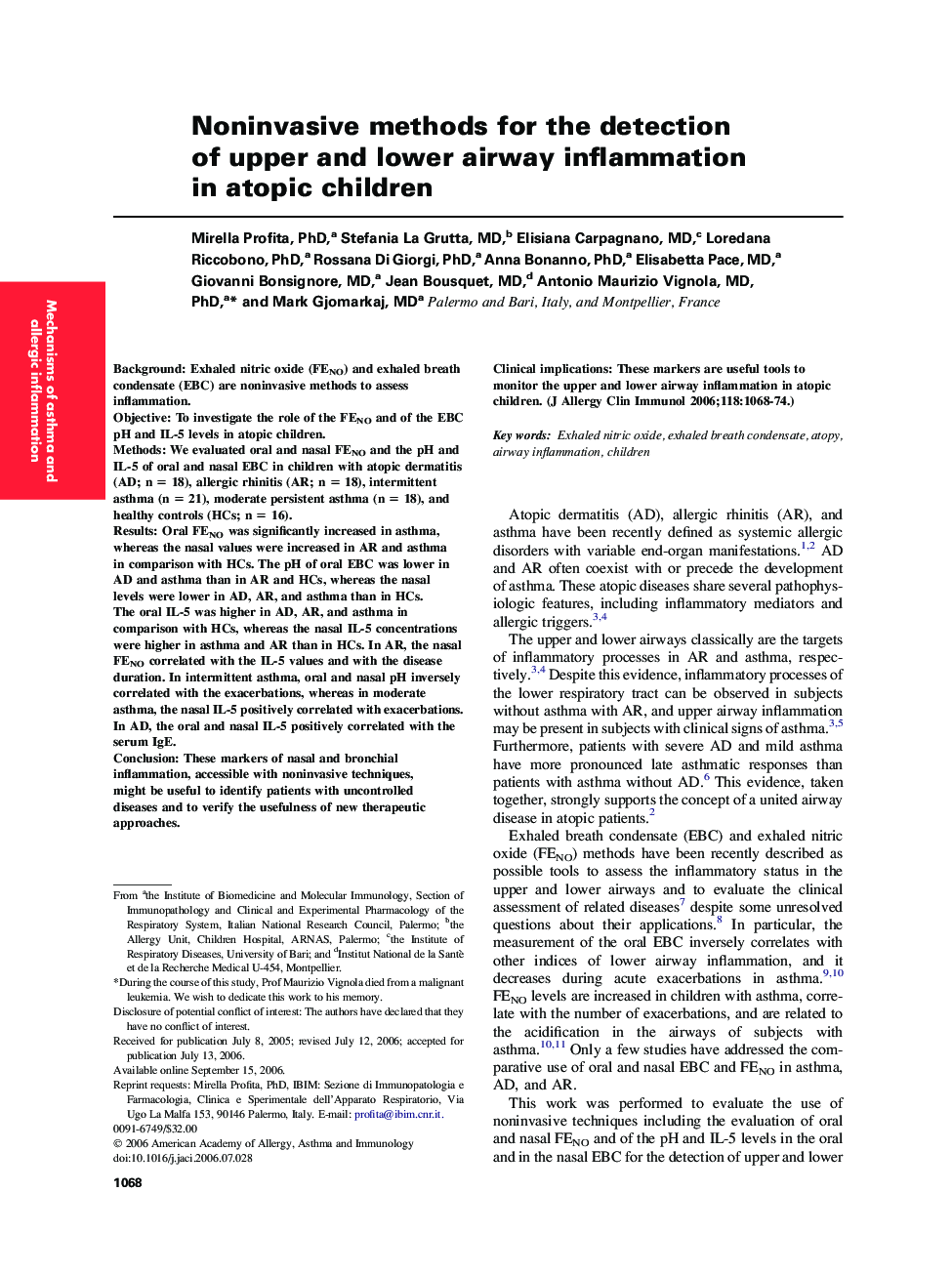| Article ID | Journal | Published Year | Pages | File Type |
|---|---|---|---|---|
| 3202552 | Journal of Allergy and Clinical Immunology | 2006 | 7 Pages |
BackgroundExhaled nitric oxide (FENO) and exhaled breath condensate (EBC) are noninvasive methods to assess inflammation.ObjectiveTo investigate the role of the FENO and of the EBC pH and IL-5 levels in atopic children.MethodsWe evaluated oral and nasal FENO and the pH and IL-5 of oral and nasal EBC in children with atopic dermatitis (AD; n = 18), allergic rhinitis (AR; n = 18), intermittent asthma (n = 21), moderate persistent asthma (n = 18), and healthy controls (HCs; n = 16).ResultsOral FENO was significantly increased in asthma, whereas the nasal values were increased in AR and asthma in comparison with HCs. The pH of oral EBC was lower in AD and asthma than in AR and HCs, whereas the nasal levels were lower in AD, AR, and asthma than in HCs. The oral IL-5 was higher in AD, AR, and asthma in comparison with HCs, whereas the nasal IL-5 concentrations were higher in asthma and AR than in HCs. In AR, the nasal FENO correlated with the IL-5 values and with the disease duration. In intermittent asthma, oral and nasal pH inversely correlated with the exacerbations, whereas in moderate asthma, the nasal IL-5 positively correlated with exacerbations. In AD, the oral and nasal IL-5 positively correlated with the serum IgE.ConclusionThese markers of nasal and bronchial inflammation, accessible with noninvasive techniques, might be useful to identify patients with uncontrolled diseases and to verify the usefulness of new therapeutic approaches.Clinical implicationsThese markers are useful tools to monitor the upper and lower airway inflammation in atopic children.
